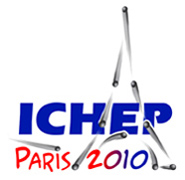Speaker
Ian Watson
(University of Sydney)
Description
* Search for 1P -> 1S radiative transitions of D mesons
We present a search for B- -> pi- D^**0, D^**0 -> gamma D0 with a data sample from the Belle detector at the KEKB e+e- collider containing 771 x 10^6 BBbar pairs. In preliminary studies, we found that the corresponding pionic decays, D^**0 -> pi0 D0 are important backgrounds. These modes have not previously been studied; we measure them in the same data sample, in order to constrain the background component in the final fit to the gamma D0 mass distribution.
* Study of radiative decays of chi_(c1,c2) and X(3872) at Belle
We present a study of the radiative decays of the chi_(c1,c2) and X(3872), produced in B decays. The results are based on a large data sample collected at the Upsilon(4S) resonance with the Belle detector operating at the KEKB asymmetric-energy e+e- collider.
* Search for charmonium and charmonium-like states in Upsilon(1S) radiative decays
Using a large sample (10^8) Upsilon(1S) events collected with the Belle detector, we present the results of a first search for charge parity even charmonium and charmonium-like states in Upsilon(1S) radiative decays. No significant chi_(cJ), eta_c, X(3872), X(3915), or Y(4140) signal is observed, and upper limits on the production rates are determined. Furthermore, no significant evidence for excited charmonium states below 4.8 GeV/c2 is observed.
* Study of X(3872) production in B meson decays
We present a study of the X(3872) meson produced in decays of neutral and charged B mesons. The results are based on a large data sample collected at the Upsilon(4S) resonance with the Belle detector operating at the KEKB asymmetric-energy e^+e^- collider.




